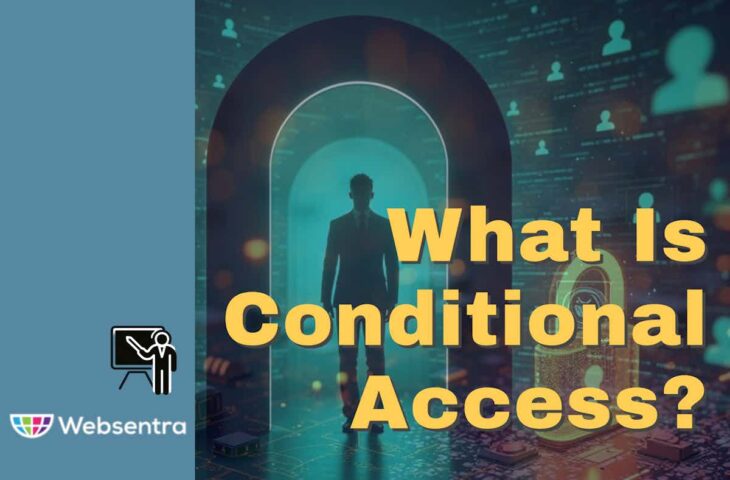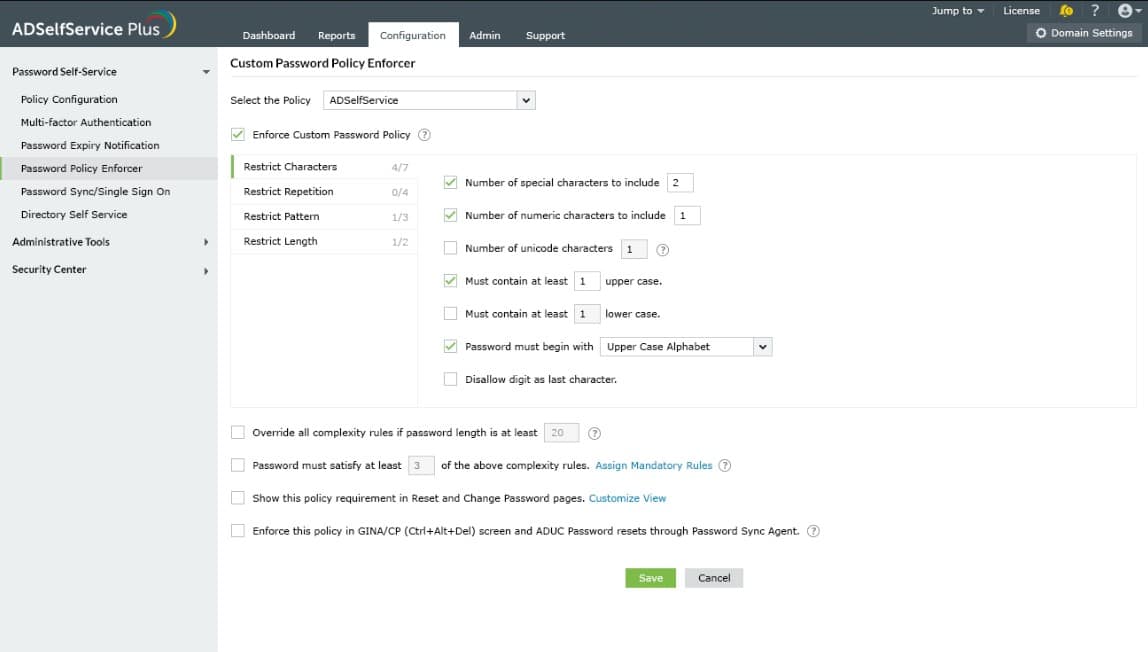We may earn a commission if you make a purchase through the links on our website.
What Is Conditional Access?

UPDATED: August 23, 2024
Conditional Access is a sophisticated security framework designed to regulate how users access data and resources within an organization. It operates by establishing specific conditions under which access is granted, ensuring only authorized users can reach particular resources under predefined circumstances. For example, a company may permit access to its internal systems only from designated locations or devices.
Policies for Conditional Access may include factors like user roles, data sensitivity, and the health status of the accessing device. This approach provides an added security layer beyond simple username and password authentication, making it significantly more difficult for unauthorized individuals to breach sensitive information.
Is Conditional Access Zero Trust?
Conditional Access is a critical element of the Zero Trust security model, though it is not synonymous with Zero Trust itself. Zero Trust is built on the principle of “never trust, always verify,” requiring continuous verification of every access attempt, regardless of the user's location or network.
While Conditional Access enforces specific policies based on contextual factors, Zero Trust involves a broader strategy, including network segmentation, the least privilege access, and continuous monitoring. Together, these methods create a comprehensive security approach for modern digital environments.
What is the Difference Between MFA and Conditional Access?
Multi-Factor Authentication (MFA) and Conditional Access are both essential security measures, but they serve distinct purposes. MFA enhances security by requiring users to provide multiple forms of verification, such as a password and a fingerprint, before access is granted.
Conditional Access, however, is a more extensive strategy that evaluates various conditions, such as user location, device health, and risk levels, to determine if access should be granted or denied.
While MFA is often a component of Conditional Access policies, Conditional Access encompasses a broader range of criteria and dynamic decision-making processes to secure resource access.
Why is Conditional Access Needed?
Conditional Access is vital for improving security, particularly with the rise of remote work. It safeguards sensitive data by ensuring only the right people access the right resources under the right conditions.
With the increasing sophistication of cyber threats, relying solely on passwords is insufficient. Conditional Access addresses this by adding multiple verification layers, such as requiring MFA or assessing the risk level of the sign-in attempt. Additionally, this enhanced security helps organizations comply with regulations and industry standards that mandate stringent access controls.
What Does Conditional Access Prevent?
- Unauthorized Access to Sensitive Resources Conditional Access ensures only authenticated and verified users can access specific systems. By enforcing strict access policies, it prevents unauthorized individuals from reaching sensitive data, thus protecting against data breaches caused by stolen or weak passwords.
- Insider Threats Conditional Access reduces the risk of insider threats by restricting access based on user roles and activity patterns. It ensures employees or contractors can only access data necessary for their roles, minimizing the chance of internal data misuse or theft.
- Malware and Malicious Software Conditional Access evaluates the security posture of devices before granting access, preventing malware from entering the network. It requires devices to meet security standards, such as having up-to-date antivirus software, reducing the risk of network infections and data breaches.
- Access from Suspicious Locations or Devices Conditional Access blocks unauthorized access attempts from suspicious locations or devices. By analyzing factors like geolocation and device health, it identifies and blocks potentially harmful sign-in attempts, preventing unauthorized access from compromised or unfamiliar devices.
ManageEngine ADSelfService Plus simplifies the implementation of Conditional Access by offering a centralized console for managing detailed access policies. Administrators can set policies based on user roles, device compliance, and location, ensuring that only trusted users and devices can access critical resources.
The platform supports over 20 advanced authentication factors, making it easier to enforce robust security measures like multi-factor authentication (MFA). With real-time monitoring and analytics, ADSelfService Plus quickly identifies and responds to potential threats, preventing unauthorized access and data breaches.
How Conditional Access Works
- Evaluating User Context Conditional Access starts by analyzing the context of each access attempt, including factors like the user's identity, location, and device status. For instance, it checks if the user is logging in from a trusted device or known location. These contextual factors help assess the risk level of the access attempt and determine if additional security measures are required.
- Applying Policies Based on Conditions Once the user context is evaluated, Conditional Access applies predefined policies to decide the next steps. Policies may stipulate that access is only allowed if the device complies with security standards, such as having the latest OS updates and antivirus definitions. If conditions are unmet, the system may require additional actions like MFA or block access entirely, ensuring access is granted only when all security requirements are satisfied.
- Real-Time Decision-Making Conditional Access makes real-time decisions for each access attempt. If all policy conditions are met, access is granted immediately. If any conditions are unmet, the system prompts the user for additional verification or denies access. This dynamic decision-making process adapts security measures to the current risk level, providing strong protection against unauthorized access.
- Continuous Enforcement and Monitoring After granting access, Conditional Access continues to enforce security policies and monitor user activity. This involves tracking access patterns, identifying anomalies, and logging all access attempts for analysis. If suspicious behavior is detected, such as unusual login times or locations, the system can take immediate action, like requiring re-authentication or revoking access. Continuous monitoring ensures ongoing security and helps detect potential threats in real-time.
Conditional Access Use Cases
- Securing Remote Work Conditional Access is essential for securing remote work environments. By enforcing policies that require MFA and device compliance checks, organizations ensure that only trusted devices and users access corporate resources. For instance, a company might require all remote employees to use VPNs and authenticated devices to access the internal network, reducing the risk of unauthorized access and data breaches.
- Protecting Sensitive Data Organizations handling sensitive data, such as financial institutions or healthcare providers, use Conditional Access to safeguard critical information. By implementing stringent access controls based on user roles and data sensitivity, they prevent unauthorized access and data leaks. For example, a bank could restrict access to customer account information to only those employees who need it for their job functions and from secured devices.
- Enhancing Compliance Conditional Access helps organizations comply with industry regulations and standards by ensuring access controls are in place and consistently enforced. This is particularly important for industries with strict compliance requirements, such as finance and healthcare. A healthcare provider, for instance, might use Conditional Access to ensure only authorized personnel can access patient records, helping to comply with HIPAA regulations.
- Facilitating Secure BYOD (Bring Your Own Device) With the rise of BYOD policies, Conditional Access ensures personal devices meet security standards before accessing corporate resources. This includes verifying device health and requiring up-to-date security patches. For example, a tech company might allow employees to use their own laptops but enforce policies that check for antivirus software and device encryption before granting network access.
- Protecting Against Phishing Attacks Conditional Access can help mitigate phishing attacks by requiring additional verification steps for suspicious login attempts. By analyzing factors like login location and device fingerprinting, it can flag and block potentially compromised accounts. For instance, if a user tries to log in from an unusual location, the system might require MFA to ensure the user’s identity, reducing the risk of successful phishing attempts.
Conditional Access Challenges
- Complexity of Policy Management Managing Conditional Access policies can be complex, especially in large organizations. Policies must be clearly defined and regularly updated to address new security threats and changing business needs. This complexity can lead to errors or gaps in security if not handled correctly. Administrators must balance security with usability to ensure policies do not become too restrictive or cumbersome for users.
- Balancing Security and User Experience One of the main challenges of Conditional Access is finding the right balance between security and user experience. Overly strict policies can hinder productivity and frustrate users, while lenient policies may not provide adequate protection. Organizations must carefully design their Conditional Access strategies to ensure that security measures are effective without being overly intrusive.
- Integration with Existing Systems Integrating Conditional Access with existing IT infrastructure and applications can be challenging. Compatibility issues may arise, especially with legacy systems not designed with modern security protocols in mind. This requires careful planning and coordination to ensure seamless integration and avoid disruptions to business operations.
- Keeping Up with Evolving Threats Cyber threats are constantly evolving, making it essential for Conditional Access policies to adapt accordingly. This requires continuous monitoring and updating of security measures to address new vulnerabilities and attack vectors. Staying ahead of these threats demands significant time and resources, and organizations must remain vigilant to maintain effective security.
ManageEngine ADSelfService Plus helps organizations overcome the complexity of policy management by allowing administrators to create and manage granular conditional access policies from a single console. With over 20 advanced authentication factors for MFA, it simplifies the enforcement of robust security measures while maintaining usability.
By supporting context-based MFA and adaptive MFA, ADSelfService Plus ensures a balanced approach to security, enhancing user experience without compromising protection. Its powerful integrations with SIEM, ITSM, and IAM tools facilitate seamless integration with existing systems, addressing compatibility issues.
Conditional Access Best Practices
- Define Clear Policies Establish clear and specific Conditional Access policies that outline the conditions under which access is granted or denied. Consider factors such as user roles, device compliance, location, and data sensitivity. Well-defined policies help ensure consistent security measures across the organization and reduce the risk of unauthorized access.
- Implement Multi-Factor Authentication (MFA) Use MFA as a standard requirement for accessing sensitive resources. MFA adds an extra layer of security by requiring users to provide two or more verification methods. This significantly reduces the risk of unauthorized access, even if a user's password is compromised.
- Monitor and Analyze Access Patterns Continuously monitor access patterns and analyze logs to detect anomalies and potential security threats. Use advanced analytics and machine learning to identify unusual behavior, such as logins from unfamiliar locations or devices. Regularly review access logs and adjust policies as needed to address emerging threats and vulnerabilities.
- Regularly Update Policies Regularly review and update Conditional Access policies to ensure they remain effective and relevant. This includes adjusting policies to address new security threats, changes in business requirements, and feedback from users. Keeping policies up-to-date helps maintain a strong security posture and ensures compliance with industry standards and regulations.
- Educate Users Educate users about the importance of Conditional Access and how it protects organizational data. Provide training on best practices for security, such as recognizing phishing attempts and securing personal devices. Informed users are more likely to comply with security policies and contribute to the overall effectiveness of the Conditional Access strategy.
Implement Conditional Access For Free Today
ManageEngine ADSelfService Plus is one of the best Conditional Access platforms, offering comprehensive tools for securing access to organizational resources for networks of any size.
It enhances security by implementing granular access policies based on user roles, device compliance, and location. The platform integrates seamlessly with Active Directory, enabling administrators to enforce multi-factor authentication (MFA) and real-time risk assessment.
ADSelfService Plus continuously monitors access attempts, using analytics to detect anomalies and adjust policies dynamically. Its user-friendly interface simplifies policy management, making it easier to balance security with user experience. By combining robust security features with ease of use, ADSelfService Plus effectively protects against unauthorized access and data breaches.
Best of all, you can try out ManageEngine ADSelfService Plus in your environment on a 30-day free trial to ensure it’s a good fit.
